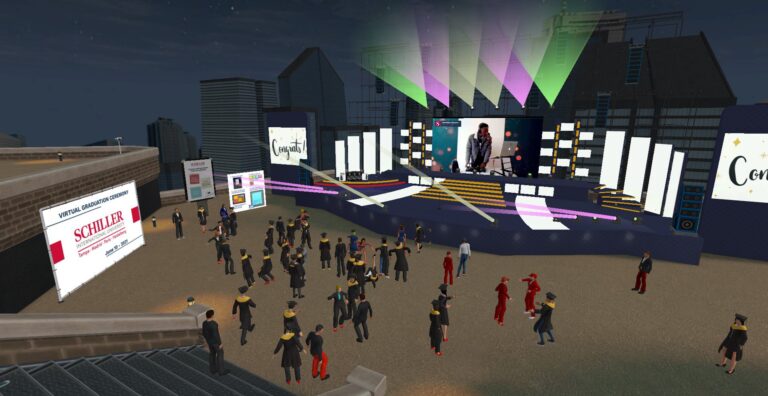Additionally, the upfront costs are remarkably low, providing the opportunity to develop and test a Minimum Viable Product (MVP) with less financial risk. This reduction of barriers to entry allows entrepreneurs to experiment and adapt their business models in an agile way, adjusting their offer to the needs and preferences of the market in real time. This allows you to pivot, innovate and grow quickly, exploring new opportunities in an ever-evolving environment.
Base Business Model to Create a Business in the Metaverse
The business model of entrepreneurship in the metaverse resembles the real estate sector, but with significant advantages as it does not require the initial physical construction. 😊
Entrepreneurs can start by using templates of existing 3D spaces to create the virtual world, thus eliminating the high costs and development times associated with creating virtual 3D spaces or digital twins.
The entrepreneur becomes the owner of their virtual world, where he/she can host an unlimited number of spaces or, strategically, limit the capacity to generate scarcity and increase the perceived value.
The space assigned to each company/client can be customized by the client himself or by the entrepreneur’s team charging for the service.
These spaces can be rented at a competitive price, offering customers a monthly subscription that guarantees recurring revenue.
Benefits for Businesses in the Metaverse
The clients that the entrepreneur rents out spaces to have obvious advantages:
- Novel format for displaying content: Users can present their products, services, or art in an innovative and engaging format, leveraging the interactive and visual capabilities of the metaverse to effectively capture their audience’s attention.
- 100% social: The virtual environment allows end users to meet and interact with each other, creating an authentically social experience that encourages collaboration, the exchange of ideas and the formation of communities within the virtual space.
- AI salesperson/support available 24/7: Customers can benefit from AI-powered virtual assistants that are available at all times to provide support, answer questions, and guide users in their interactions within the metaverse.
- Integration of private spaces on the client’s website: Each private virtual space can be integrated directly into the client’s website, offering an immersive website with a seamless and consistent experience that reinforces brand identity and improves accessibility for users.
- The benefit of network effects: Users benefit from community-generated network effects, increasing the visibility and reach of their content by connecting with a dynamic ecosystem of users and customers.
Value-added Services
Metaverse technology makes it possible to offer a wide variety of value-added services to the community without the need for additional investment or development.
- Virtual office: Users can access customizable virtual offices for meetings or demos.
- Networking zones: Interactive zones dedicated to networking can be created, where customers and users can connect and collaborate in real-time, expanding their contact networks effectively.
- Immersive event spaces: The metaverse offers versatile spaces for virtual events, from conferences to virtual product launches, with the ability to customize the experience according to the needs of the organizer.
- Streaming broadcasts: Streaming allows users to attend live events, such as concerts, conferences and sports matches, from anywhere in the world, offering an immersive and interactive experience. In addition, content creators can interact directly with their audience through virtual avatars, enriching viewers’ connection and engagement in real-time.
- Online trade shows: Online trade shows in the metaverse allow companies to showcase products and services at virtual booths on a limited or permanent basis over time.
- Training/Onboarding: It is very easy to create immersive and engaging training and onboarding programs.
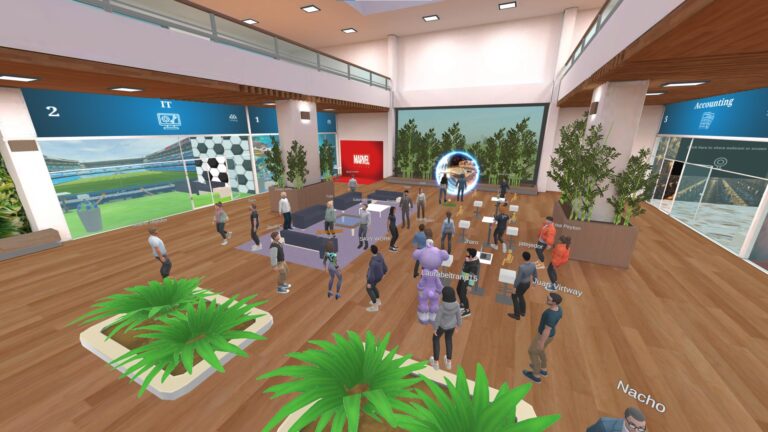

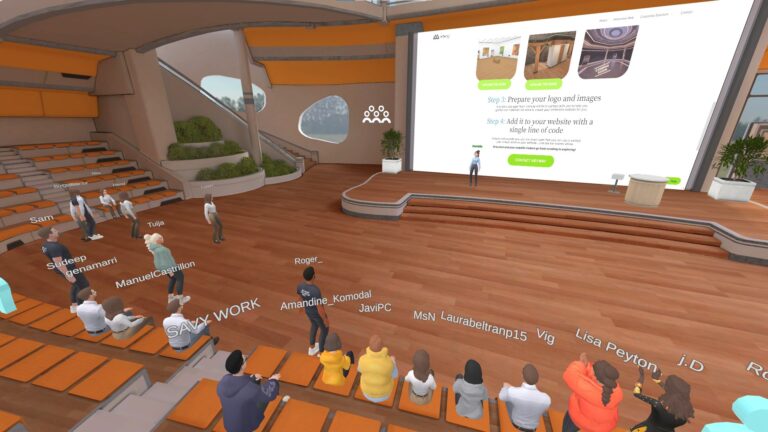
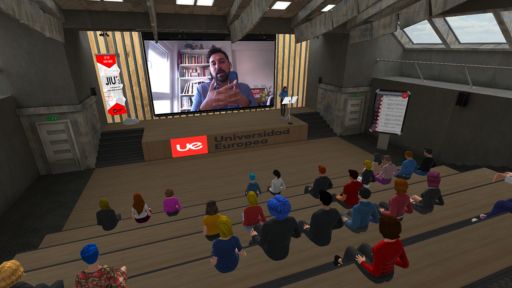
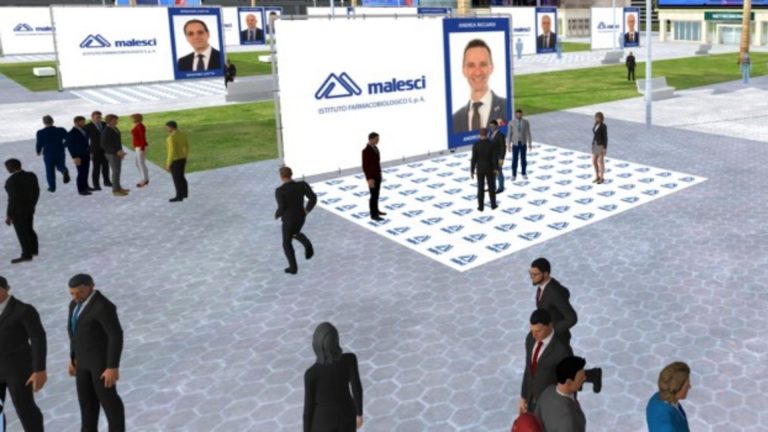

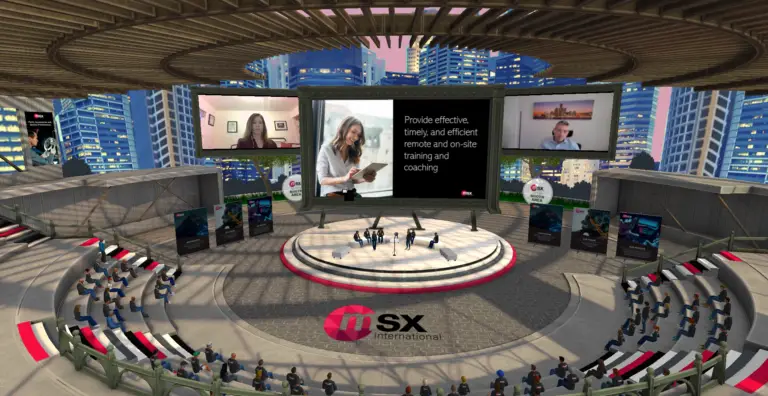
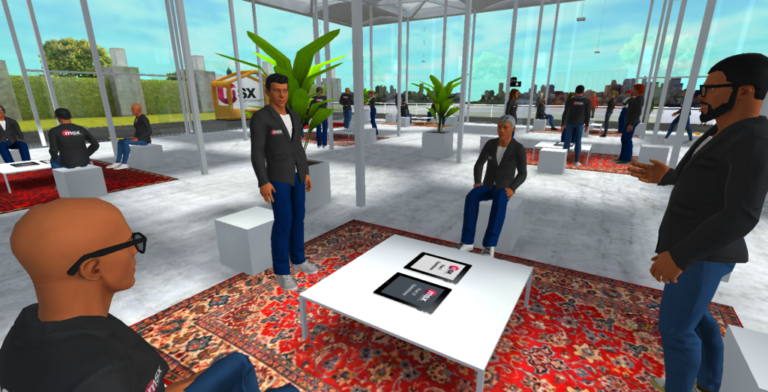
Sectors of Application
Some examples of sectors in which this scalable business model can be applied:
- Art galleries and independent artists: Artists and gallerists can rent virtual spaces to exhibit their artwork in an interactive and innovative way.
- E-commerce: Online stores in the metaverse can leverage to showcase products in novel ways, allowing customers to explore and experience products in 3D, which enhances the shopping experience and encourages interaction with the brand.
- Online training: Educational platforms can rent spaces to independent teachers, providing virtual classrooms where they can teach interactive courses and workshops, which improves learning and user satisfaction.
- Education: Create spaces with interesting content and experiences on topics that are part of the educational curriculum and offer them to schools around the world.
- Freelancers: Consultants, therapists, and other professionals can use secure spaces to meet with their clients in the metaverse, offering a confidential and accessible environment that makes it easy to deliver services remotely.
- Fan zones, Gaming, eSports: Created to offer fans of any genre or sector a space to share their content, interact with other enthusiasts, and participate in exclusive events related to their interests, fostering a vibrant and engaged community. (Like Footdistrict does, for example)
- Coworking: Renting an office more like the real world. A space to collaborate and meet with clients/investors.
- Music/Artists: A private space for each artist/musical group to showcase their work and meet fans in the common areas.
- Startup Hubs: Spaces where entrepreneurs and startups can collaborate, share ideas and be discovered by potential investors in a special environment.
- Cinema and entertainment: A private space for each film or production company where streaming platforms can organize preview events or exclusive screenings in virtual theaters, creating immersive experiences for viewers.
- Sports: A virtual space for each sports club with its history, ecommerce products, videos, prizes and, of course, the option to include NFTs.
8 Steps to Launch Your Business in the Metaverse
By following these easy steps, you are guaranteed to have a successful project.
- Identify your business niche: Evaluate your skills and experience to determine in which market sector you can provide the most value. Consider your professional contacts, as these can make it easier for you to enter a specific niche.
- Prepare your demo: Use the metaverse’s customization tools to create an attractive and functional demo in a few hours, which shows the potential of your proposal to your potential customers.
- Make a website with your value proposition: Design a clear website that explains how your metaverse solution brings added value to your niche, highlighting unique features and benefits.
- Contact your first potential customers: Manually initiate contact with potential customers or use ad campaigns on platforms like Facebook and Instagram to reach your target audience for very little money.
- Validate your message and proposal: Evaluate if your message reaches your audience and if you are offering real added value. Apply the Lean method to iterate and adjust your model until it’s optimized for the market.
- Launch your MVP: Deploy your Minimum Viable Product to gather real feedback from users and customers, ensuring that your offer meets their needs effectively.
- Get your first 10 recurring paying customers: Focus on getting customers to subscribe to your service, ensuring a steady revenue stream and validating your business model.
- Prepare your pitch: Develop a solid presentation that summarizes your proposal, initial achievements, and growth potential. Submit this information to public aid programs or business angels to obtain financing for the first phase of the expansion of your business.



